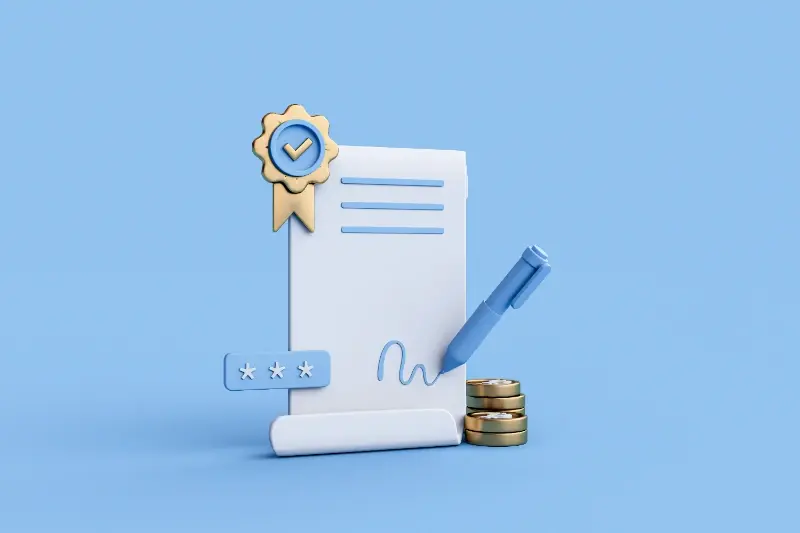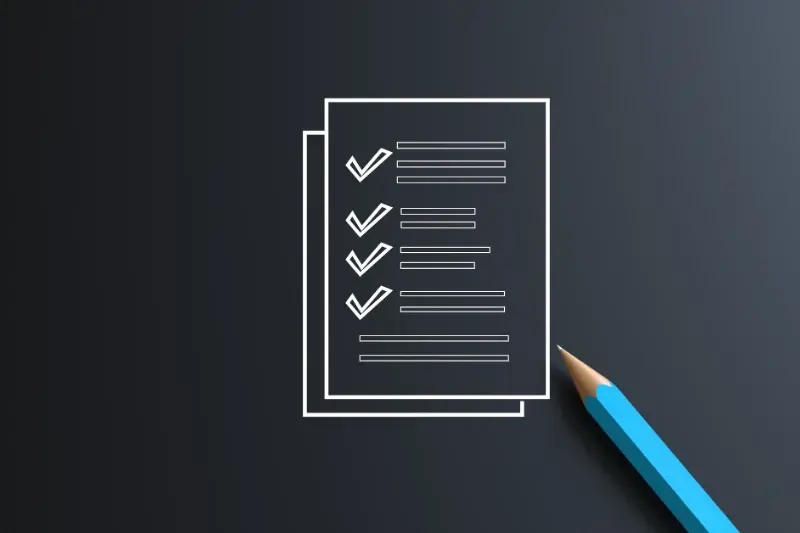App Store Compliance: Navigating Apple & Google's Ever-Changing Rules
Launching a mobile app is a bit like preparing for a driving test - you've put in countless hours of work, but success ultimately depends on following the rules and meeting the examiner's expectations. As app developers who've guided hundreds of projects through the submission process, we understand the mixture of excitement and anxiety that comes with approaching app store compliance.
The difference between app store success and rejection often lies not in the quality of your code, but in your understanding of platform guidelines and your ability to adapt to regulatory changes
Whether you're a seasoned developer or launching your first app, navigating the complex landscape of app store policies can feel overwhelming. Apple and Google's guidelines aren't just bureaucratic hurdles - they're essential quality controls that help maintain user trust and platform integrity. Yet, these guidelines are constantly evolving, making platform guideline management a crucial skill for modern developers.
In this comprehensive guide, we'll share practical insights from our experience in submission compliance strategy and app approval optimization. We'll break down the complexities of app store policy navigation into digestible chunks, helping you understand not just the 'what' but the 'why' behind platform requirements.
Think of this guide as your roadmap to regulatory adaptation - we'll explore common pitfalls, share proven strategies, and help you build a robust approach to app store compliance. By the end, you'll have a clear understanding of how to position your app for approval while maintaining its unique value proposition. Let's embark on this journey together, starting with a broader look at the current app store landscape.
Understanding the App Store Landscape
The world of app stores can feel a bit like navigating London's Underground during rush hour - complex, busy, and occasionally overwhelming. Both Apple's App Store and Google Play Store serve as gatekeepers to millions of potential users, each with their own distinct personality and rulebook.
The Two Major Players: Different Philosophies
Think of Apple's App Store as a premium boutique in Mayfair - highly curated, with strict quality controls and a focus on premium experiences. They're known for their thorough review process, similar to a strict but fair headmaster at a prestigious school. Google Play Store, meanwhile, is more like Camden Market - more open and flexible, but still maintaining important quality standards.
- Apple App Store: Manual review process, stricter guidelines, longer review times (typically 24-48 hours)
- Google Play Store: Automated initial screening, more flexible policies, faster review times (typically a few hours)
- Both stores: Regular policy updates, focus on user privacy and security
- Revenue split: Standard 70/30 model (with some exceptions)
Market Dynamics and Trends
Understanding these platforms goes beyond just knowing their rules. It's about recognising how they evolve with user needs and market demands. For instance, both stores now place tremendous emphasis on user privacy - rather like how GDPR changed the way we handle data in Europe.
The landscape isn't static; it's constantly shifting like British weather. New policies often emerge in response to user concerns, technological advances, or regulatory requirements. Staying informed about these changes isn't just good practice - it's essential for long-term success in the app marketplace.
Building a Rock-Solid Submission Compliance Strategy
Getting your app approved shouldn't feel like solving a Rubik's cube blindfolded. With a well-structured submission compliance strategy, you can navigate the process with confidence, much like having a trusty GPS for a long journey.
Start with Pre-Submission Groundwork
Begin by creating a comprehensive checklist that covers both platforms' basic requirements. Think of it as preparing for a driving test - you wouldn't show up without learning the Highway Code first. Your checklist should include elements like age ratings, content permissions, and privacy policy documentation. This proactive approach to platform guideline management helps prevent those frustrating rejection notices.
Implement Continuous Monitoring
Just as the British weather keeps us on our toes, app store policies are constantly evolving. Set up a system to monitor policy updates regularly. We've seen countless apps face rejection simply because they missed a new regulatory adaptation requirement. Consider appointing a team member as your 'compliance champion' to keep track of these changes.
Your app approval optimization strategy should include regular internal audits. Think of these as MOTs for your app - they help identify potential issues before they become problems. Review your app's functionality, content, and user data handling practices against current guidelines at least quarterly.
Create a submission compliance calendar that reminds you to check for policy updates every month. Set alerts for major platform announcements and schedule regular reviews of your app's compliance status.
Remember, a solid submission strategy isn't just about ticking boxes - it's about building a sustainable framework that adapts to changing requirements while maintaining your app's core value proposition. Like a well-tended garden, it needs regular attention and care to flourish.
Essential Guidelines for Apple and Google Platforms
Let's face it - navigating app store guidelines can feel like trying to complete a particularly tricky puzzle. As app developers ourselves, we've learned that understanding these essential requirements doesn't have to be overwhelming. Let's break down the most crucial guidelines for both platforms in plain English.
Apple App Store Fundamentals
Apple's guidelines centre around three core principles: safety, performance, and business transparency. Your app must provide a secure environment for users, which means implementing proper data protection measures and being crystal clear about privacy policies. Think of it like childproofing a house - you need to ensure everything is secure before welcoming visitors.
The interface must follow Apple's Human Interface Guidelines, maintaining consistency with iOS design principles. Remember those lovely rounded corners and intuitive gestures we've all grown fond of? That's exactly what Apple expects. Your app should feel as natural as brewing a proper cup of tea.
Google Play Store Essentials
Google's approach is slightly different, focusing on content quality, technical performance, and restricted content. They're particularly keen on apps that don't drain battery life or hog device resources. It's rather like being a considerate houseguest - you wouldn't want to overstay your welcome or make a mess!
Both platforms share common ground on certain requirements: no misleading descriptions, appropriate content ratings, and transparent in-app purchase systems. We've found that maintaining detailed documentation of how your app meets these guidelines saves countless hours during the review process. It's similar to keeping your passport updated - you want everything in order before reaching the checkpoint.
Remember, these guidelines aren't just bureaucratic hoops to jump through; they're designed to create better, safer apps for everyone. When you align with these requirements early in development, the submission process becomes much smoother.
Common Rejection Reasons and How to Avoid Them
The difference between app store success and rejection often lies not in the quality of your code, but in your attention to platform guidelines and user privacy
We've all been there - that heart-sinking moment when you receive an app rejection notice after weeks of development. It's like preparing a perfect cup of tea, only to accidentally add salt instead of sugar. But fear not! Understanding common rejection reasons is your first step toward submission compliance strategy success.
Privacy and Data Concerns
The most frequent rejection reason we encounter involves privacy issues. Both Apple and Google are increasingly strict about how apps handle user data. Think of your app as a responsible shopkeeper - you need to clearly explain what information you're collecting and why. Ensure your privacy policy is comprehensive and easily accessible, and always request only the permissions your app genuinely needs.
Technical and Content Guidelines
Another common stumbling block involves technical performance and content quality. Just as you wouldn't serve a half-baked Victoria sponge, don't submit an app with placeholder content or bugs. We've learned through platform guideline management that apps must deliver a complete, polished experience. Check for crashes, test all features thoroughly, and ensure your metadata (screenshots, descriptions, and preview videos) accurately represents your app.
To optimise your app approval process, maintain a pre-submission checklist. Review your app against the latest platform guidelines, test across different devices, and double-check your age ratings. Remember that regulatory adaptation is an ongoing process - what worked last month might not work today. By staying vigilant and keeping up with policy changes, you'll significantly improve your chances of first-time approval.
Future-Proofing Your App Store Presence
Keeping your app store presence current feels a bit like trying to catch a moving train, doesn't it? Just when you think you've got everything sorted, the platforms throw new guidelines your way. But don't worry - we've helped countless developers stay ahead of the curve, and we'll share our best practices for maintaining a future-ready app presence.
Embrace Flexibility in Your Development Process
Building flexibility into your development workflow is crucial. Think of it like designing a modern building - you need strong foundations but also the ability to adapt to changing requirements. We recommend implementing modular code structures and maintaining comprehensive documentation that makes updates more manageable when new guidelines emerge.
Stay Informed and Proactive
Setting up a robust monitoring system for platform updates is essential. Subscribe to official developer newsletters, join relevant developer forums, and follow trusted industry blogs. It's like having a weather forecast for app store changes - the earlier you spot incoming changes, the better you can prepare.
Consider establishing a quarterly compliance review schedule. This helps catch potential issues before they become problems, much like servicing your car regularly rather than waiting for it to break down. During these reviews, examine your app's privacy policies, content guidelines compliance, and technical requirements adherence.
Remember to maintain a feedback loop with your users. They're often the first to spot compatibility issues or areas where your app could better align with platform guidelines. Plus, active user engagement often leads to better store rankings and more positive reviews - a win-win for everyone involved.
Conclusion
Navigating the complex world of app store compliance might feel like trying to hit a moving target whilst blindfolded. As we've explored throughout this guide, successful platform guideline management requires dedication, attention to detail, and a willingness to adapt to change - much like keeping up with British weather!
Remember that achieving app store compliance isn't a one-time accomplishment but rather an ongoing journey. Just as you wouldn't expect your favourite cuppa to stay hot forever, your submission compliance strategy needs regular attention and updates to remain effective. The key is to stay informed, remain proactive, and build flexibility into your development process.
Whether you're dealing with Apple's stringent review process or Google's evolving requirements, regulatory adaptation has become an essential skill for any app developer. Think of it as learning the rules of cricket - at first, they might seem overwhelming, but with practice and patience, they become second nature.
Most importantly, don't let the complexity of app approval optimization discourage you. Every successful app in the stores today has gone through this same journey. By following the guidelines we've discussed, maintaining transparent communication with the platforms, and staying committed to quality, you're already on the path to success.
The mobile app landscape will continue to evolve, but with a solid understanding of compliance requirements and a strategic approach to platform guideline management, you'll be well-equipped to navigate whatever changes come your way. After all, in the world of app development, adaptability isn't just a nice-to-have - it's essential for long-term success.
Share this
Subscribe To Our Blog
You May Also Like
These Related Stories

App Store Approval: Getting Your Licensing Documentation Right

Going Global: The App Compliance Checklist You Actually Need





